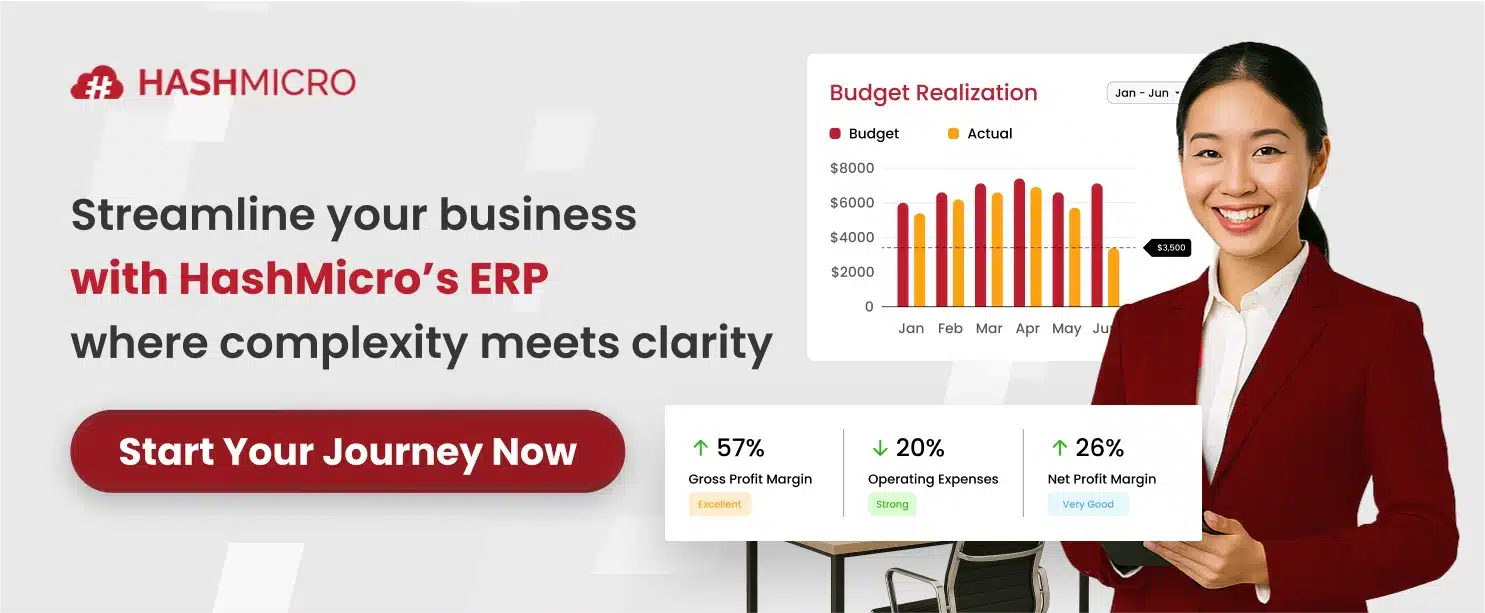In the competitive manufacturing landscape of Singapore, achieving operational excellence, resource management, and product innovation are paramount for success. This requires leveraging the right technologies that can drive efficiency and enable strategic decision-making. Two such pivotal technologies are Enterprise Resource Planning (ERP) and Product Lifecycle Management (PLM).
ERP systems streamline and integrate various business functions, including inventory management, order processing, financial management, and human resources management. On the other hand, PLM systems focus on managing the entire lifecycle of a product, from concept to retirement, ensuring efficient product development, collaboration, and innovation.
Understanding the unique strengths and application areas of ERP and PLM is crucial for manufacturers in Singapore to excel in their operations. In this article, we will explore the distinct benefits offered by ERP and PLM, their core functionalities, and how their integration can drive manufacturing excellence. By navigating the synergies between ERP and PLM, manufacturers can optimize operational efficiency, resource management, and product innovation, propelling their business towards success in the dynamic Singaporean market.
Key Takeaways
|
Table of Content:
Table of Content
Introduction to ERP and PLM as Pivotal Technologies Driving Manufacturing Success
ERP and PLM are the backbone of business operations in the manufacturing industry. ERP systems handle various business functions such as supply chain management, production planning, and financials, while PLM systems focus on product development, lifecycle management, and innovation. Both technologies are essential for optimizing manufacturing processes and driving overall success.
ERP, or Enterprise Resource Planning, is a software system that integrates and manages important business functions, data, and processes across various departments within an organization. It provides a centralized database and real-time insights, enabling efficient resource allocation, streamlined operations, and improved decision-making. ERP systems play a crucial role in enhancing operational efficiency, reducing costs, and increasing productivity in the manufacturing industry.
On the other hand, PLM, or Product Lifecycle Management, focuses on managing the entire lifecycle of a product from ideation to retirement. It encompasses product design, engineering, collaboration, documentation, and change management. PLM systems enable manufacturers to streamline product development processes, ensure regulatory compliance, and foster innovation. By leveraging PLM solutions, manufacturing organizations can effectively manage their product portfolios, drive continuous improvement, and bring high-quality products to market faster.
By seamlessly integrating ERP and PLM systems, manufacturers in Singapore can harness the synergistic benefits of both technologies. This integration allows for enhanced data visibility and accessibility, improved collaboration across departments, and efficient resource utilization. Manufacturers can achieve better control, efficiency, and innovation in their business operations, positioning themselves for manufacturing excellence in the competitive landscape.
Definition and Core Functionalities of ERP Systems
ERP systems are essential tools for modern businesses, especially in the manufacturing industry in Singapore. ERP stands for Enterprise Resource Planning, and these systems are designed to streamline and integrate various business functions within an organization. By consolidating data and processes, ERP systems enable companies to improve operational efficiency, resource management, and decision-making.
One of the core functionalities of ERP systems is inventory management. With real-time visibility of inventory levels and automated tracking of stock movements, manufacturers can optimize their inventory control, minimize stockouts, and reduce carrying costs. This ensures that the right products are available at the right time, improving customer satisfaction and eliminating costly production delays.
Another critical functionality of ERP systems is order processing. By automating the order entry, invoicing, and fulfillment processes, manufacturers can streamline their sales operations, reduce order errors, and accelerate order fulfillment. This not only enhances customer satisfaction but also improves cash flow and overall operational efficiency.
ERP systems also provide robust financial management capabilities. They enable businesses to track and manage finances, including accounts payable, accounts receivable, and general ledger. With accurate financial data and real-time reporting, manufacturers can make informed financial decisions and ensure compliance with regulatory requirements.
Furthermore, ERP systems offer human resources management functionalities, enabling organizations to effectively manage their workforce. From employee records and payroll processing to performance management and training, ERP systems provide a centralized platform for HR-related activities, ensuring efficient resource allocation and fostering employee development.
By leveraging ERP systems, manufacturing companies in Singapore can benefit from enhanced operational efficiency, streamlined resource management, and improved decision-making. The seamless integration of various business functions within a single system not only eliminates data silos but also enables faster access to critical information, empowering organizations to respond swiftly to market changes and drive continuous improvement. With ERP systems, manufacturers can optimize their business processes, enhance productivity, and gain a competitive edge in today’s challenging market.
Definition and Key Components of PLM Systems
In today’s competitive marketplace, effective product development and lifecycle management are crucial for organizations to stay ahead. PLM systems, or Product Lifecycle Management systems, are powerful tools that enable businesses to efficiently manage the entire lifecycle of their products – from initial concept and design to retirement.
PLM systems consist of several key components that work seamlessly together to support product development, lifecycle management, and innovation processes:
1. Product Data Management: This component focuses on organizing and centralizing product data, including technical specifications, bills of materials, and design documentation. It ensures data integrity, version control, and accessibility for all stakeholders.
2. Product Design and Engineering: PLM systems provide powerful design and engineering tools that enable organizations to create and modify product designs. These tools support various functionalities, such as 3D modeling, simulations, and virtual prototyping, facilitating efficient and accurate design iterations.
3. Collaboration and Communication Tools: Effective collaboration between cross-functional teams is essential for successful product development. PLM systems offer collaboration and communication features that allow teams to share information, exchange feedback, and work together seamlessly, regardless of location or time zone.
4. Product Portfolio Management: This component helps organizations strategically manage their product portfolios and make informed decisions regarding resource allocation, investment, and product retirement. It provides visibility into product performance, market trends, and customer feedback, allowing organizations to optimize their product offerings.
By integrating these key components, PLM systems empower organizations to streamline their product development processes, improve time-to-market, reduce errors, and enhance product quality. Furthermore, PLM systems foster innovation by facilitating the continuous improvement of products throughout their lifecycle.
To visualize the key components of PLM systems, refer to the image below:
Comparison of ERP and PLM Focusing on Their Unique Strengths and Application Areas
When it comes to the manufacturing sector in Singapore, the utilization of both ERP (Enterprise Resource Planning) and PLM (Product Lifecycle Management) systems is crucial for achieving operational excellence and driving product innovation. While both technologies play significant roles in managing different aspects of the manufacturing process, they possess distinct strengths and application areas.
ERP systems primarily focus on managing business operations and resource planning. They streamline processes related to supply chain management, production planning, inventory control, and financial management. By providing real-time data and centralized management capabilities, ERP systems optimize operational efficiency and promote effective resource allocation within manufacturing organizations.
On the other hand, PLM systems are dedicated to product development and managing the entire lifecycle of a product. They encompass functionalities such as product design, engineering, collaboration tools, and portfolio management. With PLM systems, organizations can efficiently manage product data, track changes, and foster cross-functional collaboration, thereby driving product innovation and ensuring successful introduction and retirement of products.
The unique strengths of ERP and PLM make them indispensable for different areas of manufacturing. While ERP systems are essential for managing day-to-day operations and optimizing resource utilization, PLM systems enable organizations to innovate and bring new products to market effectively. This synergy between ERP and PLM empowers manufacturing organizations in Singapore to achieve manufacturing excellence by harmonizing operational efficiency with product innovation.
Discussion on How ERP and PLM Address Different Business Needs Within The Manufacturing Sector
When it comes to addressing the diverse business needs of the manufacturing sector, both ERP and PLM systems play key roles. ERP systems are designed to cater to the operational and financial needs of manufacturing organizations, enabling them to streamline their supply chain management, enhance production planning, and ensure accurate financial tracking. These systems provide a comprehensive and integrated approach to managing various business functions, helping manufacturers achieve operational efficiency and effectiveness.
On the other hand, PLM systems focus on supporting the product development and innovation processes within manufacturing organizations. They enable companies to manage the entire product lifecycle, from concept to retirement, efficiently. By facilitating collaboration, document management, and version control, PLM systems empower manufacturers to improve their product design and engineering capabilities, enhance communication and collaboration among cross-functional teams, and drive continuous improvement in product performance and quality.
By implementing both ERP and PLM systems, manufacturing organizations can bridge the gap between their operational and product-related needs. While ERP systems optimize business operations and resource management, PLM systems foster innovation, product development, and effective lifecycle management. Together, these systems provide a holistic approach to managing the diverse requirements of the manufacturing sector, helping organizations achieve sustainable growth and competitive advantage.
To visualize the relationship between ERP and PLM in addressing business needs within the manufacturing sector, refer to the image below:
Synergistic Integration of ERP and PLM
Integrating ERP and PLM systems is strategically important for holistic business management in the manufacturing sector. The synergistic integration of these technologies allows for seamless data sharing, improved collaboration between different departments, and enhanced visibility across the entire value chain.
By integrating ERP and PLM systems, manufacturing organizations can achieve better control, efficiency, and innovation in their operations. ERP systems provide the foundation for managing operational and financial aspects of the business, while PLM systems focus on product development and lifecycle management.
The integration of ERP and PLM enables manufacturers to streamline processes, eliminate redundant data handling, and improve decision-making by leveraging real-time information from both systems. This integration enhances the overall efficiency of the organization and empowers teams to work cohesively towards common goals.
The image above represents the concept of holistic business management, which is made possible by integrating ERP and PLM systems. It symbolizes the interconnectedness of various business functions and departments, resulting in a unified and efficient operation.
Sequencing ERP and PLM Deployments
When implementing ERP and PLM systems, organizations in Singapore must carefully consider the sequencing of deployments to align with their business priorities and long-term goals. The decision of whether to implement ERP or PLM first depends on the specific needs of the organization, taking into account factors such as the existing infrastructure, current pain points, and strategic objectives.
It is often recommended to adopt a phased implementation approach to minimize risks and ensure a seamless integration of ERP and PLM systems. This approach allows organizations to gradually deploy these technologies, making necessary adjustments along the way and ensuring that each system is fully optimized before moving on to the next.
By taking a strategic approach to ERP and PLM deployment, organizations can effectively address their immediate business priorities while laying the foundation for long-term success. This enables them to optimize operational efficiency, enhance resource management, foster innovation, and drive continuous improvement throughout their manufacturing processes.
Conclusion
In Singapore’s dynamic manufacturing environment, staying ahead requires more than just keeping up – it demands operational excellence and a commitment to innovation. That’s where HashMicro’s ERP Software shines as a game-changer. Our comprehensive ERP solution empowers manufacturers with streamlined operations, efficient resource management, and seamless product lifecycle management.
By integrating HashMicro ERP into your workflow, you unlock a world of possibilities: from optimizing processes to fostering innovation and maintaining a competitive edge in the ever-evolving market. With HashMicro ERP, strategic deployment paves the way for immediate gains and long-term success, propelling your organization towards manufacturing excellence with confidence.
Get a free demo with HashMicro today to improve your business efficiency


























































